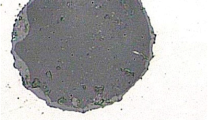Abstract
Collaborations between metallurgists and industrial engineers have led to the development and successful introduction of high-machineability steels that make it possible to significantly improve machining indices at machine factories. The highest level of machineability is seen in free-cutting steels alloyed with sulfur, lead, and bismuth. This article examines aspects of their composition and structure and explains the role of nonmetallic inclusions, the importance of their morphology, and the need to have them distributed uniformly in the metal. A metallurgical technology can be used to improve the machineability of ordinary structural steels through inoculation with calcium or microalloying with sulfur. In the latter case, while sulfur content is kept to the level stipulated by standards for structural steels (S ≤ 0.04%), the machineability of these steels is improved as a result of a change in the morphology of the sulfides. A diagram is presented to show the areas in which different variants of high-machineability steels are used most effectively.
Similar content being viewed by others
REFERENCES
Ya. E. Gol'dshtein and A. Ya. Zaslavskii, Structural Steels with Good Machineability [in Russian], Metallurgiya, Moscow (1977).
Yu. D. Yashin, “Investigation of the effect of the composition and morphology of the excess phases in low-carbon free-cutting steel on its machineability,” Author's Abtract of Dissertation, Tolyatti (1980).
Ya. N. Malinochka and G. Z. Koval'chuk, Sulfides in Steels and Cast Irons [in Russian], Metallurgiya, Moscow (1988).
Yu. D. Yashin, “Effect of sulfide inclusions and lead on contact interactions in the machining of free-cutting steel,” in: Theory of the Friction, Lubrication, and Machineability of Metals [in Russian], Cheboksary (1980), pp. 17–21.
A. Ya. Zaslavskii, “Advanced free-cutting steels,” Nats. Metall., No. 4, 9–16 (2002).
M. I. Shevchenko and Yu. D. Yashin, “Study of cutter wear in the turning of calcium-bearing steel ATs20KhGNM,” Pered. Proizvodst. Opyt v Avtomobilestr., No. 5, 20–24 (1983).
Author information
Authors and Affiliations
Additional information
__________
Translated from Metallurg, No. 6, pp. 59–62, June, 2005.
Rights and permissions
About this article
Cite this article
Yashin, Y.D., Soldatkin, S.A. & Chesnokov, P.Y. High-Machineability Steels. Metallurgist 49, 236–241 (2005). https://doi.org/10.1007/s11015-005-0084-0
Issue Date:
DOI: https://doi.org/10.1007/s11015-005-0084-0




